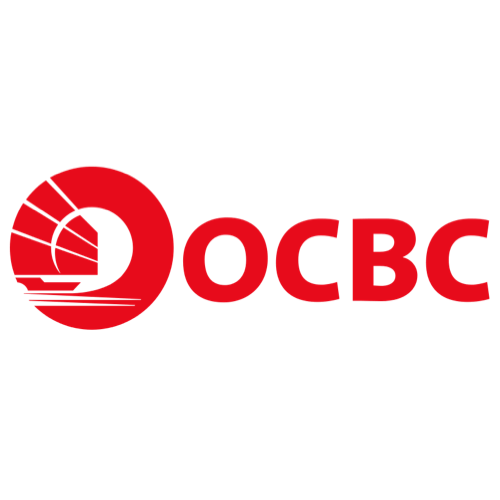 OVERSEA-CHINESE BANKING CORP
OCBC
O39.SI
OVERSEA-CHINESE BANKING CORP
OCBC
O39.SI
OCBC - Expectedly weak non-interest income and higher provisions
- 3Q15 earnings dented by lower insurance income contribution, partially offset by higher trading income; NIM was flattish while loans were sluggish
- Provisions and NPLs inched up as expected; regional operations stayed fairly robust
- Slower earnings? growth expected ahead; traction to depend on recovery of regional economies; continued non-interest income focus to cushion moderating top-line growth
- Maintain BUY, S$10.00 TP
Highlights
Lower non-interest income trends; flattish NIM and loans.
- 3Q15 earnings were dented by lower insurance income contribution from unrealised mark-to-market losses from GE’s non-par fund which was expected given the trend in spreads during the quarter. However, Great Eastern's underlying business remained strong with total weighted new sales and new business embedded value increasing 33% and 16% y-o-y respectively.
- Positively, other fee income elements stayed largely intact especially from loan and trade fees, while trading income was higher.
- Wealth management income fell q-o-q due to weak market conditions; Bank of Singapore’s AUMs were flat q-o-q.
- Net interest income saw little growth as NIM stayed largely flat while loan growth (1% q-o-q; 4% yo-y) was sluggish.
- Stronger deposit growth caused loan-to-deposit ratio to ease but this was also detrimental to NIM due to lower asset yields generated.
Provisions and NPLs inched up as expected.
- OCBC’s provisions and NPL ratios have been the lowest among peers and to stay at those levels will be challenging in the current operating environment.
- Provisions were largely higher – general provisions were raised to buffer for future uncertain markets while specific provisions were slightly higher across the countries except for Malaysia.
- NPLs rose from the classification of a few large corporate accounts related to the oil and gas services sector. Note that OCBC’s oil and gas exposure was at 6% of total loans while commodities were at 7% of total loans as at 3Q15. There may still be some risks to the oil and gas exposure depending on trends of oil prices but its commodity portfolio remains healthy.
- Elsewhere, capital ratios were strong while liquidity coverage ratios and leverage ratio stayed comfortably above minimum requirements.
Regional operations held up well.
- OCBC’s Malaysian operations (17% to group PBT) was fairly resilient, booking a slight NIM improvement, stable non-interest income and slightly improved NPLs with a decent loan growth (3% q-o-q;13% y-o-y). These trends are contrary to Malaysian peers which are expected to show weakness.
- Its Indonesian operations, OCBC NISP saw top-line improvement, thanks to improved NIM and strong loan growth but offset by lower fee income and higher provisions (largely related to SME lending) while NPL ratio was stable.
- Meanwhile, OCBC-WHB saw a slight decline in earnings q-o-q largely from lower non-interest income Top-line growth was sluggish from slower loan growth while deposits contracted. NPL ratio inched up to 0.6% from 0.4% q-o-q. We understand that its overall Greater China asset quality remained sound.
Outlook
Sluggish outlook ahead; dependent on regional economies.
- Loan demand remains weak and 2015 loan growth could stay at low single digits and is unlikely to contract even going into 2016. Management believes that loan demand should pick up when the neighbouring economies see a recovery in growth.
- Nevertheless, focus to grow its non-interest income franchise, especially its wealth management business is aimed at buffering potential moderation in net interest income due to sluggish loan growth.
- Further risk to provisions and NPLs would be largely dependent on oil prices and strength of the regional economies. At the moment, provisions are sufficient. Current NIM levels should be maintained as excess liquidity will be closely managed from here. There appears to be less need to aggressively grow US$ funding in the near term.
- Capital levels have built up healthily, largely supported by retained earnings and scrip dividends. The scrip dividend will likely continue until capital levels are more comparable to peers.
Keeping its insurance franchise.
- OCBC has no plans to sell its position in Great Eastern as it remains complementary to its non-interest income franchise. Management believes that it remains logical and beneficial to keep the insurance product manufacturing in-house. Great Eastern still maintains its market position in both Singapore and Malaysia. Management believes that the viability of staying in the insurance business remains one to strongly consider.
- New insurance companies are still coming into Asia and the insurance sector remains under-penetrated, indicating that there is still potential for growth over the long term.
- Q-o-q variations depend on asset allocation and would likely result in earnings volatility. But so long as the total weighted sales and new business embedded value remain healthy, it will be positive for the insurance business over the longer term. As long as the interest rate cycle is on an uptrend, it will be positive to an insurance business.
Valuation:
- Our S$10.00 TP which implies 1.1x FY16F BV is derived from the Gordon Growth Model.
- OCBC’s share price should rerate with stronger earnings at OCBC-WHB. The potential reach of its differentiated non-interest income franchise should support valuations.
- A turn in the interest rate cycle with minimal disruption to asset quality will be testimony of its robust credit position.
Key Risks:
Slower traction in wealth management business.
- As a growing income contributor, stricter regulatory requirements for private banking clients could slow growth. Additionally, weak and volatile markets could cause risk-averse customers to reduce investment activities.
Failure to integrate Wing Hang Bank’s business.
- Failure to extract synergies from recently acquired Wing Hang Bank could take a longer-than-expected toll on EPS/ROE.
LIM Sue Lin
DBS Vickers
|
http://www.dbsvickers.com/
2015-10-28
DBS Vickers
SGX Stock
Analyst Report
10.00
Same
10.00


